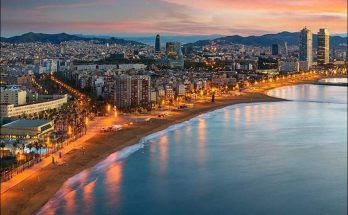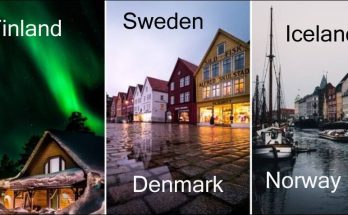The railways powerfully contributed to the fusion of North and South, after the historical dissolution, so long resisted, of the Pontifical State. But it was easy for the Italians to find one another; the obstacle had been there a long time, it is true, but it was artificial.
For foreigners, however, the result was the very opposite; the railways — and later, the rapidity of the automobile — made it less easy for them to enter into any real relation with Italian life, with the mental and spiritual life of ideas not only in the great cities, but in the quiet smaller cities of the country-side, and the provinces. After the advent of the railways, books appeared by foreigners, often full of beauty, on the Greek ruins in Calabria, on Milan or on Venice, on art in Sicily or in the Uffizi at Florence; but we no longer found among us a Goethe, a Stendhal, a Browning, a Shelley, wandering about among the contadini and humble folk.
In boyhood I had discovered at home, to my delight, some old guide-books of Italy of the eighteenth century, and I have never forgotten the emotion that I received from a Guida di Viaggio in Italia per un Gentiluomo Polacco, and its appendix, in four columns, of Conver sazione in italiano, latino, francese e polacco. There was a little of everything, both in the book and in the “Conversazione”, and almost everything was dealt with together as in life: archaeology and cookery, music and women, high roads and receptions.
It is a great contrast to those famous Sensations d’Italie in which Paul Bourget goes into ecstasies before Sienese pictures of the second class, and which seems like a cemetery of ideas that have been embalmed. One feels that authors of this kind can never really have lived in Italy, that, driven by the contracts with the publishers, they are only thinking of the magnificent pages they will build up from the notes scribbled in their pocket-books, and for this very reason there utterly escapes them that integration of the ancient and the actual which alone allows us to understand a living nation.
The Italian — and above all, the Italian of the people — is so complex and yet at the same time so simple that one can only smile at the foreigners who think they have discovered the key to the Italian character after passing a year or two in the peninsula.
It seems like a paradox, but I believe it is easier to understand the complexity of the Italian than his simplicity. How can a contadino or an Italian artisan be anything but complex when he is such an infallible judge of the moral character of the “foreigner”, of the “signore” with whom he has to deal?
Woe to the new proprietor of a podere or of a villa, woe to the foreigner who has rented a house or apartment for three years, if the people around him sum him up as “proud” or “overbearing”; very soon there will be an emptiness about him and he will obtain nothing from anyone, even though he is ready to pay double what other foreigners are paying — “forestieri” and “signori” who are recognized as “gentile” and “alla mano”.
To understand a people, a foreign nation : that is a business in which intelligence and culture only serve if they are enlivened by human sympathy.
What makes the traveller is not the distance of the country visited but the capacity to see, to immerse himself in the spirit of the country to which he has travelled. I have seen the standardized traveller in Mongolia, and real travellers on the Lombard plain and in the villages of the Var.
The capacity to understand is not to be acquired by literary experience, it is bought with our very life. The French who, wishing to penetrate beyond the museums, come to Italy saturated with Stendhal, and the Germans who come down with a Goethe in their hands, remind me of certain Oriental converts to Catholicism, who read in one of our Cathedrals the same Massbook as the ordinary crowd of the faithful : they read, but their emotion is not the same.
Visits: 102



